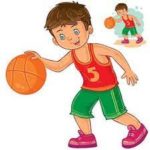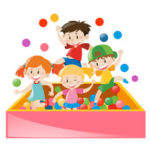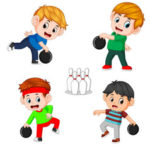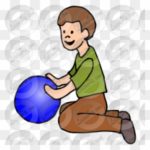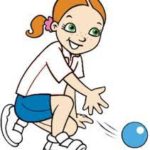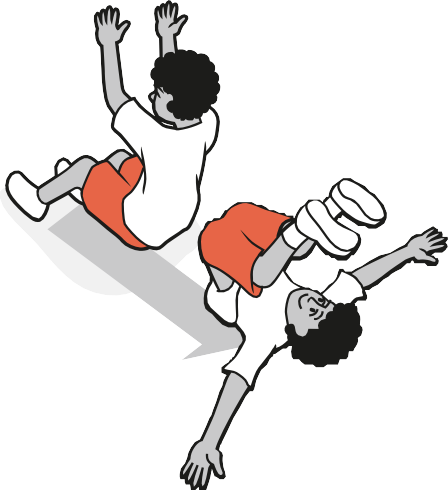
by Santosh | Jun 11, 2020 | Fitness Activity
Movement skills/concepts
Falling forwards and backwards, landing on feet and body awareness.
Set-up
Benches, box tops, mats, hoops, ropes, chalk.
Children, equipment and targets are spread out in a general space.
Activity
Children move in random directions to a specified pattern (e.g. eight runs, fall forwards and freeze; or eight skips, jump to stand still, and fall backwards).
Children ‘make-believe’ they are falling and landing. Examples are:
- landing from a parachute jump
- falling from a bicycle
- falling while ice skating or rollerblading
- being tripped in a game of netball/soccer
- losing balance while walking along a steep cliff and rolling down the bank
- slipping off the monkey bars and falling on the
Can you see …?
- landing surfaces safe and even
- awareness of others
- correct techniques
You could ask …
What is the first thing you need to think about when you lose your balance or start to fall? Why is this?
Children often break an arm or collarbone when they fall. What can you do to prevent this when you fall?
COOL DOWN/ CLOSURE
Review Skill/Activity, stretching, and questions.
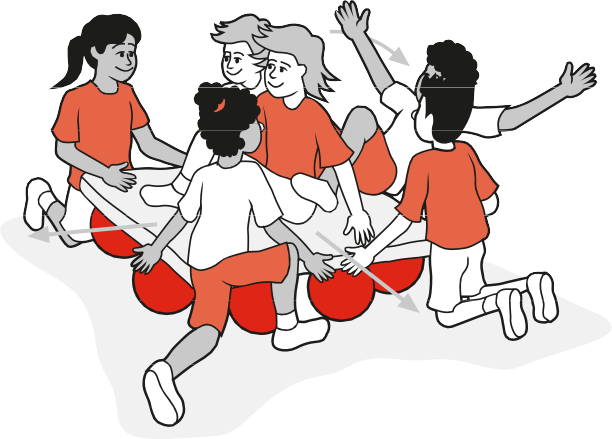
by Santosh | Jun 11, 2020 | Fitness Activity
Movement skills/concepts
Backwards shoulder roll, body and space awareness.
Set-up
Firm mats, large balls, slopes or ramps.
Activity
Tip the boat: In pairs, players sit opposite each other on a mat in a tightly tucked position, with arms strongly wrapped around legs. One player (the tipper) places their toes under the opponent’s feet. The tipper has to tip the boat of the opponent. The opponent resists. A tip scores one point. Switch roles after three attempts.
Backward shoulder roll: Fall back and shoulder roll down a slope.
Rock the boat: Place a mat on about eight balls. While four children swivel the mat (boat), two (or three) other children sit on it, fall off (or out of) the boat and backward shoulder roll. Children can kneel or crouch as well.

Can you see …?
- head looking to one side, knees on that side close to ears
- looking at knees as they come over
- arms out to side
- falling slowly first, then with increasing speed
- landing surfaces safe and even
You could ask …
How can you land safely when falling backwards? How do you feel when you fall backwards?
COOL DOWN/ CLOSURE
Review Skill/Activity, stretching, and questions.
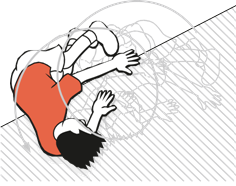
by Santosh | Jun 11, 2020 | Fitness Activity
Movement skills/concepts
Forward shoulder roll at speed from different levels and directions.
Set-up
Slope or ramps, firm mats or suitable surface. Children are freely spaced.
Activity
Children practise a forward shoulder roll.
- fall forwards down a slope – look sideways
- from one side of a line, roll diagonally forwards to other side
- roll diagonally over elastic
- try chessboard rolling – roll from one square (or circle) diagonally forwards to the next
Can you see …?
- body extended and low
- hands flat, turned inwards
- landing with lower arm–upper arm–shoulder–back–feet
- falling and rolling slowly at first, then with increasing speed
You could ask …
How do you feel about falling forwards fast? How can you fall forwards fast but safely?
Variations
Add obstacles: Dive over a low obstacle and roll forwards.
COOL DOWN/ CLOSURE
Review Skill/Activity, stretching, and questions.
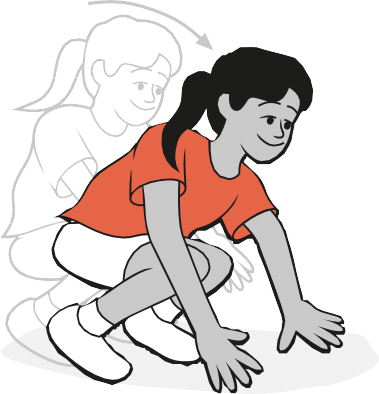
by Santosh | Jun 11, 2020 | Fitness Activity
Movement skills/concepts
Falling to land on front support and awareness of the body in personal and general space.
Set-up
Variety of landing surfaces, crash pad, mats. Children are freely spaced.
Activity
Children practice the following activities:
- from kneeling, put your fingertips on the ground, then, by pressing down, ‘squeeze’ the water out of an imaginary sponge
- from crouching, fall forwards and stop before your stomach touches the ground
- try the above on varied landing surfaces, over elastic or flexi cord
- from standing, fall forwards like a tree being felled, dominoes (group), a wave at the beach,
- play ‘Timber Tag’ in a defined area with several taggers – when a player is tagged, they fall forwards calling ‘Timber’ and become the new
Can you see …?
- bending of fingers, palms, heels of hand, then elbows
- fingers slightly inwards, hands flat
- straight back, tightened tummy
You could ask …
How do you feel about falling forwards?
What do you need to do to land safely on your hands/arms?
COOL DOWN/ CLOSURE
Review Skill/Activity, stretching, and questions.
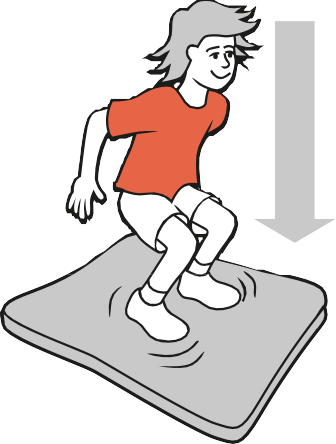
by Santosh | Jun 11, 2020 | Fitness Activity
Movement skills/concepts
Jumping, landing and balancing, space awareness (levels and directions) and relationships (with equipment).
Set-up
Ropes and bases/discs.
Children are spread out, with one rope and one base/disc each, in a level grass or hard area.
Activity
Can you …?
- stand on your base and, on the signal, try to jump (high to give you more time in the air) and click your heels together before you land – how many clicks can you do before landing and can you land on your base?
- jump from your base and see how many times you can clap your hands together before you land – as your feet touch the ground, freeze your body, perfectly still and stay in that position for three seconds
- jump over a rope and land on the other side without falling down – think of your feet sinking into the floor as if the floor were a sponge and freeze in that position for three seconds
- jump over your rope in different ways – try to take off on one foot and land on two
- change the direction of your jump to land – jump forwards, backwards, sideways
- jump high in the air as you travel over your rope and land as softly as you can – freeze and hold for three seconds
- jog, run, skip, gallop, hop, etc and, on the signal, jump to land – freeze and hold for three seconds
Can you see …?
- toe–ball–heel landing sequence
- knees bending after heels contact the ground
- straight back
- holding or ‘stick’ balance
- head up, looking straight ahead
You could ask …
Which ways of jumping did you enjoy the best?
What position did you hold when you landed on your feet?
Why do you need to hold this position for at least three seconds?
Variations
Vary object: Jump over different objects (e.g. beanbags, balls, low-level box tops, benches).
COOL DOWN/ CLOSURE
Review Skill/Activity, stretching, and questions.







